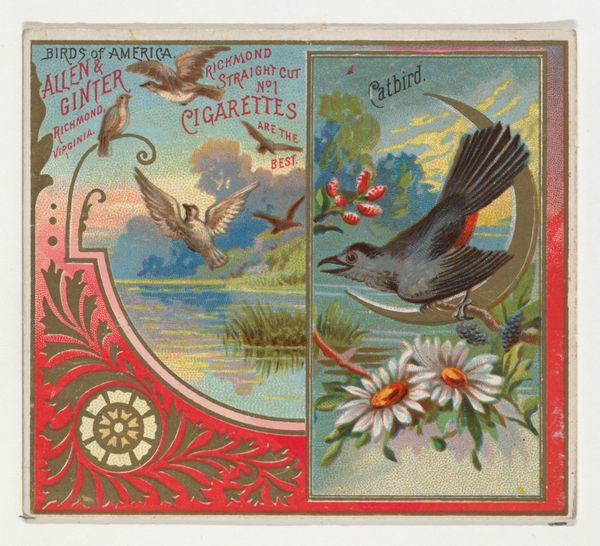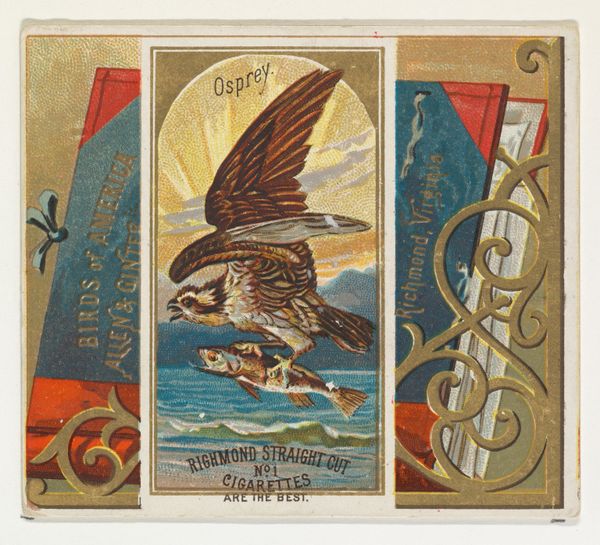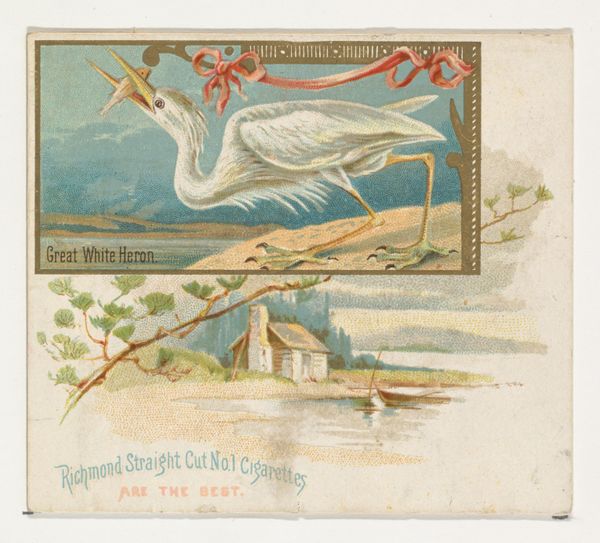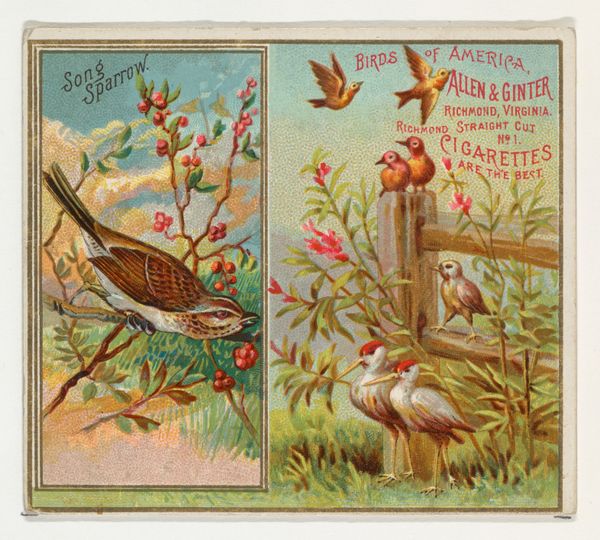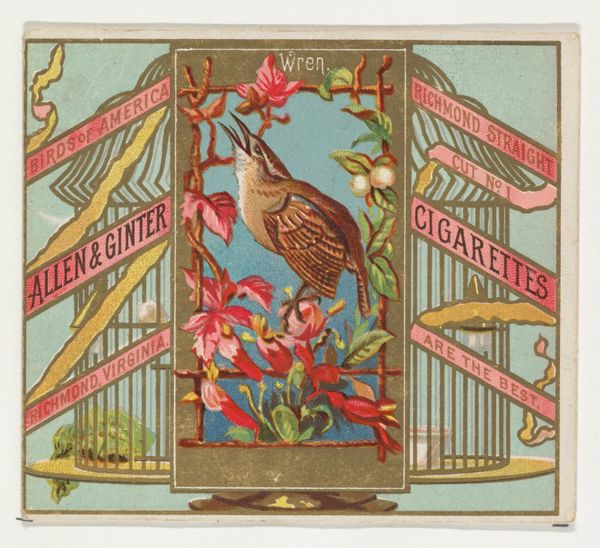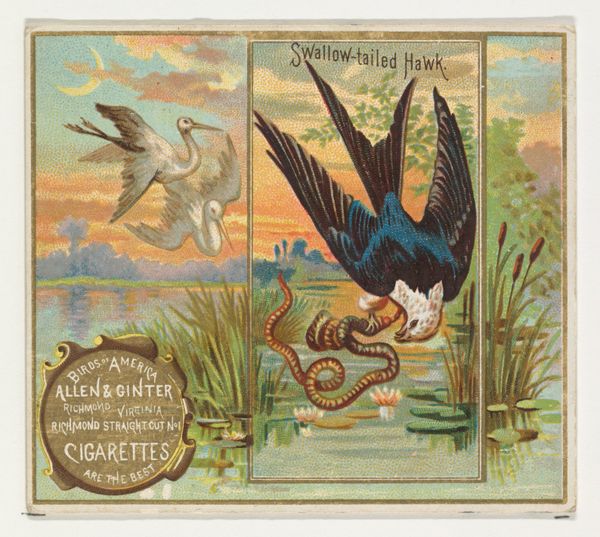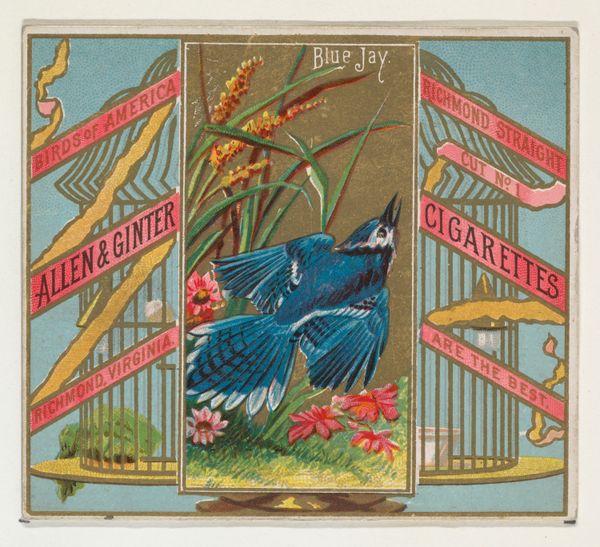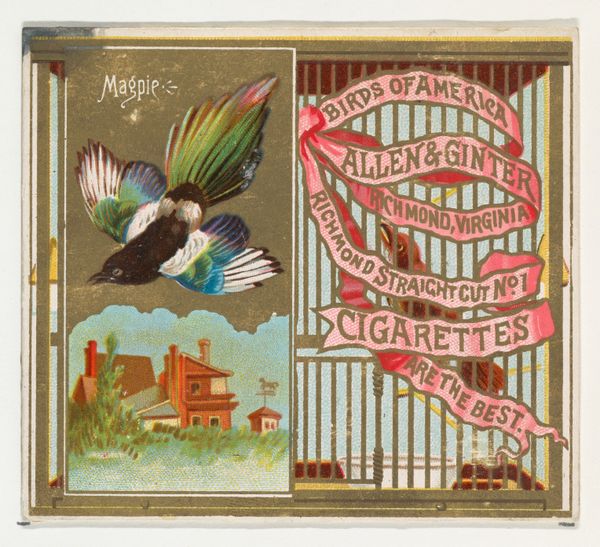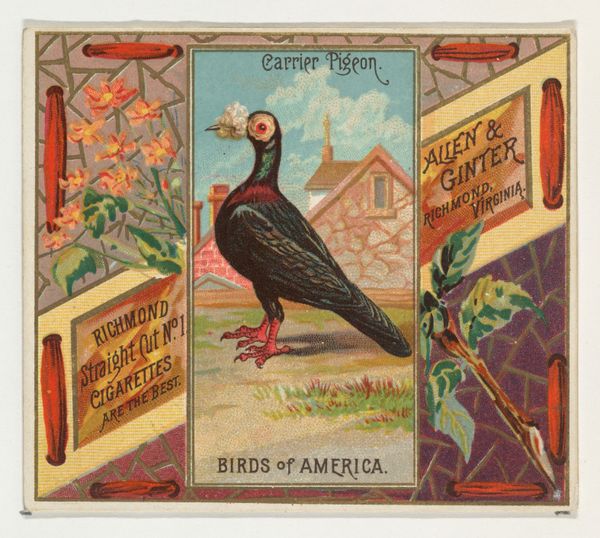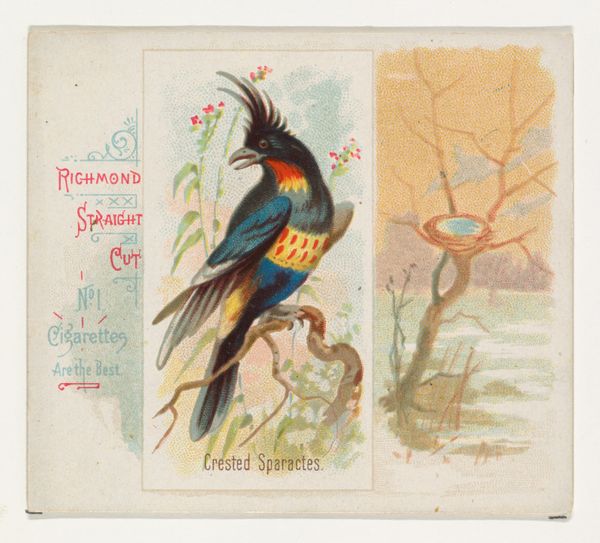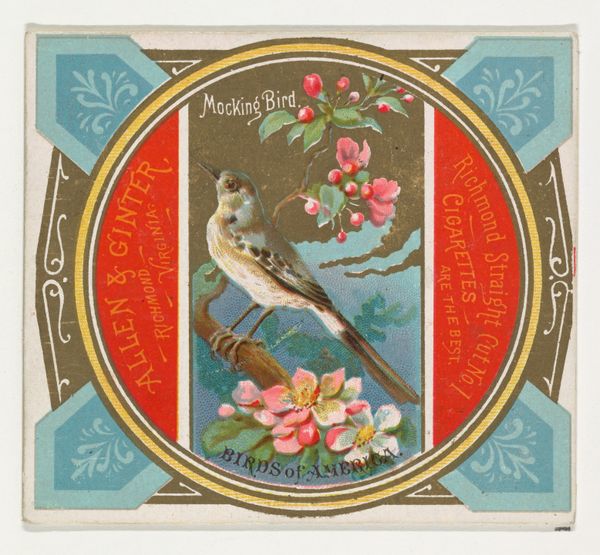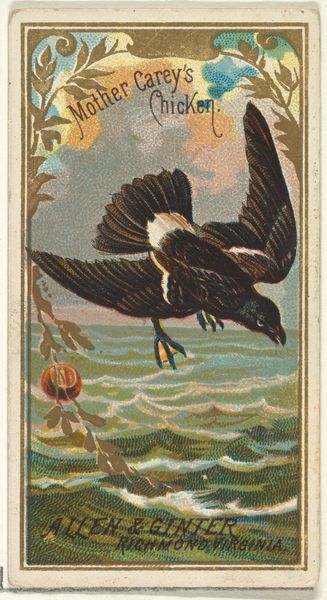
Eagle, from the Birds of America series (N37) for Allen & Ginter Cigarettes 1888
0:00
0:00
lithograph, print, paper
#
lithograph
# print
#
paper
#
watercolour illustration
Dimensions: Sheet: 2 7/8 x 3 1/4 in. (7.3 x 8.3 cm)
Copyright: Public Domain
Curator: Let's turn our attention to "Eagle," a print from the "Birds of America" series dating back to 1888. It was created for Allen & Ginter Cigarettes, a company known for inserting collectible cards into their packs. It’s currently housed here at The Met. Editor: Right away, I get this strange feeling of faded glory. It's like a miniature stage set for an American allegory, or maybe an advert that wandered in from a dream. It’s an arresting composition! Curator: These cards are prime examples of Japonisme, a Western fascination with Japanese art and design that was rampant during the late 19th century. Notice the flattened perspective and the decorative floral motifs. They borrow heavily from Ukiyo-e prints. Editor: Ah, that's where I pick up the otherworldly quality. I feel a kinship with those bold lines and blocks of color from Ukiyo-e, but then slapped against this, quite frankly, audacious branding...it is jarring! The eagle itself is rendered with an almost photographic realism though, which lends it a sense of dignity amidst the noise. Curator: Precisely! There's a tension created by this blend. On one hand, we have a symbol of national pride—the eagle, standing firm. On the other, we see it being used to hawk a product often linked to public health concerns. Editor: Talk about conflicted! But isn't that often the case? Power, commerce, ideals all twisted together like that red foliage down there. It's kinda unsettling how a small piece of ephemera like this manages to mirror larger social contradictions. Curator: The juxtaposition certainly forces us to consider the relationship between commercial interests, national identity, and artistic representation. Editor: I tell you, it’s funny how sometimes the smallest things kick up the biggest storms of thought. It’s like finding a message in a bottle that sailed across time. Curator: Agreed. It reminds us that art, even in its most utilitarian forms, is always speaking, revealing hidden layers if we listen closely.
Comments
No comments
Be the first to comment and join the conversation on the ultimate creative platform.
